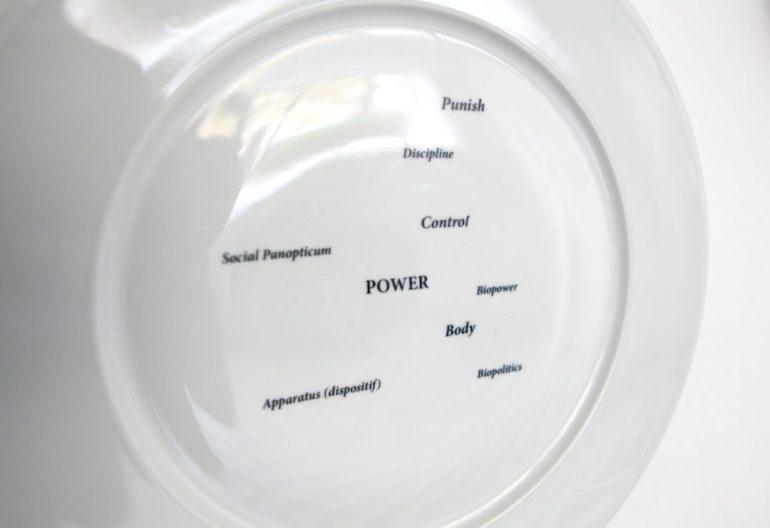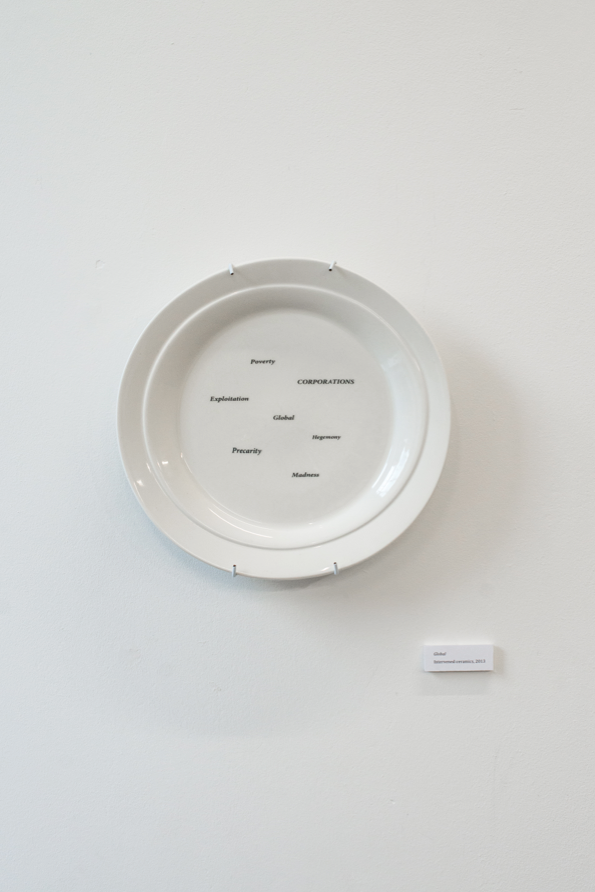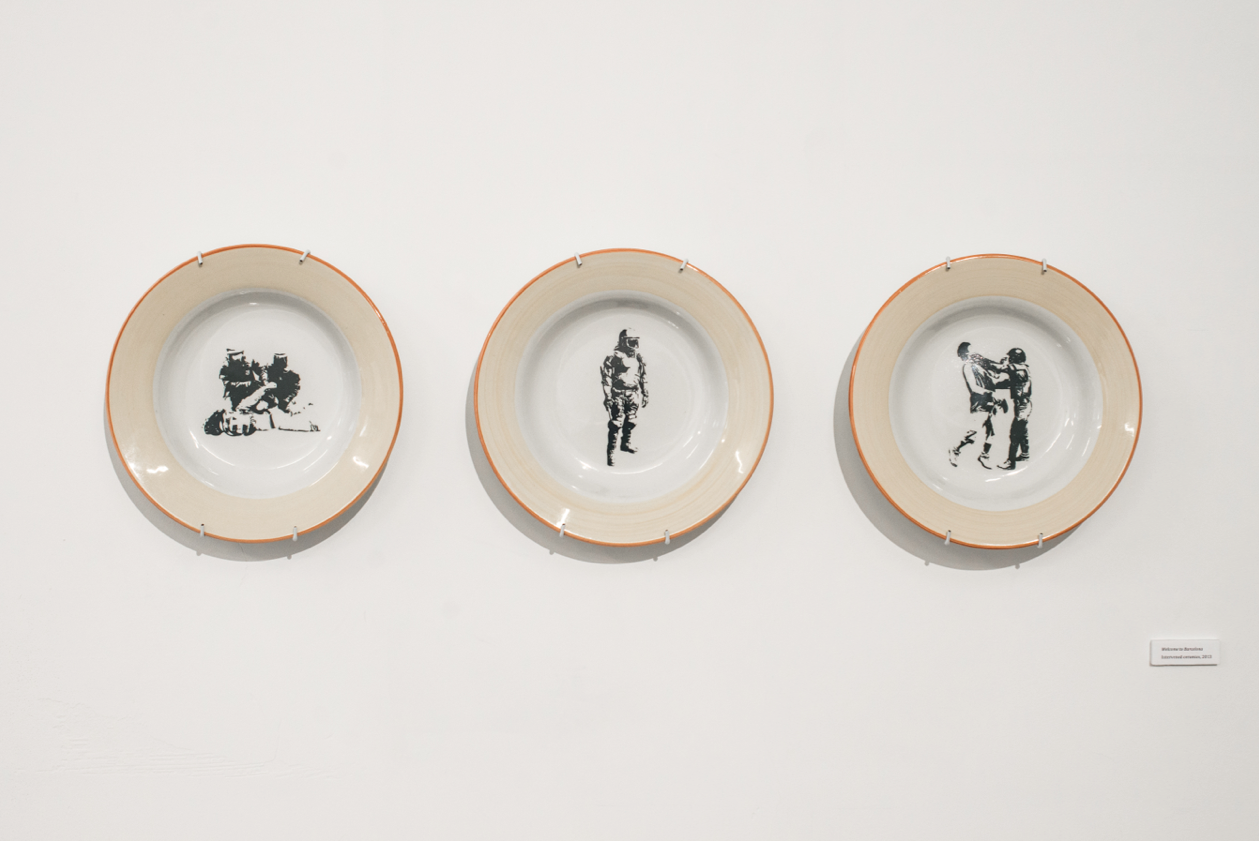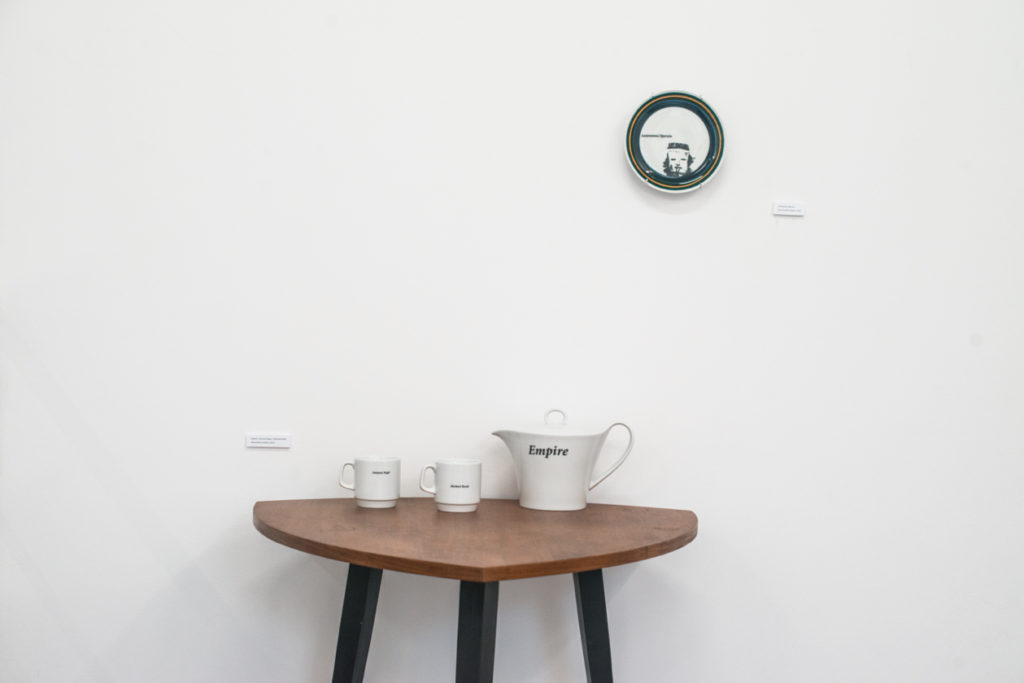
Jon Irigoyen: There is always room for one more
2016-07-07
14–23 July 2016 IV–VI 4–8 pm
Opening 13 July 6 pm
Artist talk and screening 14 July 6 pm
For one week in July project space “Sodų 4” will turn into a mini-residency space for artist Jon Irigoyen who will implement his ongoing project “There is always room for one more”. Working with ceramics, Irigoyen will present his tableware and elaborate on its more powerful and symbolic meanings where different social, political, and class values inextricably merge. Following the miniresidency, the exhibition will be on display for two more weekends until 23 July 2016.
In times of the postmodern society, few things play as influential role in our lives as consumerism does. Consumption is intimately tied to the creation and production of a sense of self. While all objects we consume attribute us to certain groups, the creation of our own objects – in this case dish-ware – confronts this dynamic by suggesting a “Do It Yourself” production process. How about creating our own dish-ware with our own symbolic and personal imagery, and leaving it to our descendants?
The words and images I have printed on my own dish-ware are representations of events happening all around the South of the World / Europe. They are also my everyday life statements. They reflect the situations of the present world and global crisis in contrast to the apparent well-being, abundance and ease of the countries of Northern Europe. By focusing on these struggles we can begin to insinuate a prefigurative form of post-capitalist society that begins to emerge from everyday social practices.
Bon appétit.
Jon Irigoyen
Jon Irigoyen is an artist, independent curator, organizer and cultural agitator born in Bilbao, Spain, currently based between Helsinki and Barcelona. He grew up in the dirty, punk, post-industrial city of Bilbao and has lived in different European cities in the last 14 years. His research interests and projects span the intersecting relationships between artist and spectator; the interaction between public and urban space; the perception of reality; as well as concepts such as autonomy, resistance and memory. Irigoyen has devised and implemented projects, exhibitions and workshops in Finland, Spain, Ireland, Lithuania, Latvia, Colombia, Russia, Berlin, Peru, Georgia, USA and elsewhere. He was a founding member of the experimental contemporary dance collective Liikë in Barcelona. He has been on the Board of Helsinki’s Pixelache Festival Since 2009. At the moment he is a doctoral candidate at the Department of Art in Aalto University with the supervision of Finnish philosopher Juha Varto.
More about the artist http://www.jonirigoyen.com
This exhibition is organised by Lithuanian Interdisciplinary Artists’ Association, with kind support from Lithuanian Council for Culture and the Ministry of Culture of the Republic of Lithuania.
Project Space “Sodų 4”
Sodų Str. 4, Vilnius
Installation Photos by Samanta Matuizaitė
Artworks price list
Global (250e)
Intervened ceramics, 2013
My friend Foucault (350e)
Intervened ceramics, 2013
Welcome to Barcelona (250 each)
Intervened ceramics, 2013
Autonomia Operaia (100e)
Intervened ceramics, 2015
Enemy (100e)
Intervened ceramics, 2015
Utopia Vs Money (250 each)
Intervened ceramics, 2015
Semio-Capitalism (300e)
Intervened ceramics, 2015
Consumer Society (250e)
Intervened ceramics, 2015
Extracts from the conversation between Jon Irigoyen and Emilija Stepšytė
E.S. I know that you are from Bilbao and now live in a completely different city from a cultural point of view, Helsinki. Now you came to Lithuania for a mini-residency in project space “Sodų 4”. What is your view on the city of Vilnius?
J.I. I felt that there is quite small artist circle and everybody knows everybody. I think it’s still quite traditional, even though there is the Contemporary art center and some galleries, I don’t see so many contemporary art spaces. I’m really happy that I was invited to work at this space and I hope that people who will come to the exhibition will see something new, something that would bring new ideas, concepts.
E.S. You mentioned traditional art, but the use of ceramics for tableware is known for its associations with old handicrafts and settled ways of life, tradition. Is this kind of material a challenge for you in any way, because as far as I know you have a very dynamic way of life. Did you actually think of that disconnection?
J.I. This is the key in this project, I am taking something from a traditional background, in this case the ceramic tableware. This project began when I found some crockery that belonged to different generations of my family. One day I was looking at it in my mother’s house and I was thinking what it meant to me and what this kind of object could bring. I wanted to find a new approach to these objects. I think this handicraft tradition is really important in this current situation we live in, in our capitalistic countries where internet and this other level of reality is taking more and more space, more lives, emotions, relationships, etc. So it was interesting trying to bring back this tradition.
E.S. When I heard about your project using broken tableware for the first time I remembered how upset I felt when I broke one of the tableware pieces. I’ve read that in Greek tradition breaking plates is part of a celebration. However, it is a symbol of conspicuous consumption as well. Does your project take this social aspect into it?
J.I Yes, actually where I come from (Southern Spain) breaking plates, for example, in weddings, is a tradition. At some point plates are used as knifes to cut meat and afterwards the person who is cutting just breaks the plate. And I am not sure about nowadays, but somewhere people are also used to break glasses for the good luck. As for the consumption… I try to work on this idea. What does it mean or why do we have these objects? Are they just objects or do they have other sides? Like family relations, emotions or social status, class. That is of course a very important point of my work.
E.S. Do you personally feel trapped in consumeristic mechanisms?
J.I. Myself? Yes, I think we all are. Actually, I worked in advertising for many years, so I know what consumption means, the tactics of the system to make us feel in need of objects that we do not really need. I am trying not to be so hooked on consumption, but, of course, I am a part of it. It is almost impossible not to be, but I am aware of it and I am trying to avoid it. This consumption has some real side effects for example for those who are taking loans for buying houses or cars, especially after the most recent crisis that we are still in. In Spain it was terrible because people were taking loans for buying objects they do not really need and because of the crisis they went bankrupt. Now they have nothing.
E.S. When I come to think of it, most of the tableware I have was inherited or received as a present. It seems to me that the words you’ve written are the things that we, as a society, are leaving after us. Where did the ideas written on the plates came from?
J.I. I have been studying these concepts earlier. They came from different French philosophers: Michel Foucault, Jean Baudrillard, etc. Somehow it was right using these concepts, because I put a lot of work and energy in all these ideas. Even if they are sometimes too academic. I am sure that not so many people know such concepts as “Semio-capitalism”. It comes from philosopher Franco ‘Bifo’ Berardi, who is, I think, the most interesting philosopher right now in Europe. His ideas come from the tradition of “Autonomia Operaia” from late 60’s revolutions in France and Italy. So these ideas came to me naturally.
E.S. In your most recent project “What can a body do” and also a couple of other projects like “Scars” and light installation “Resist” you were also using texts. Do you think there is a reason why you need just simple words?
J.I. Now thinking about that, I am not conscious about this kind of use of text. In my head the ideas come intuitively. Maybe because nowadays we are living in a world of images of many levels – images of ourselves, objects. So I guess I am using words as a contrast or maybe because of the saturation of images. I am trying to find all the ways to work with them in my projects.
E.S. Do you re-evaluate the space every time you are putting up an exhibition? How the location of Sodų 4 is going to interact with the installation?
J.I. Of course I can see this neighborhood is undergoing changes. It is happening everywhere, the gentrification processes… It is what we know what happens to all cheap areas: they attract investment, so the prices go up. Perhaps many people think that this is a very positive thing, but this also results in some negative consequences. Firstly, the prices go up, and not just for the food, or drinks, but also for the rent. It then means that many people have to leave the area and go to the suburbs. One of my friends Miguel Garcia from Barcelona had this project where he was recording old people from Raval, the center neighborhood of Barcelona. He found out that when you disconnect someone from their friends, routine, it provokes a traumatic experience. And their quality of life, of course, goes down, so this is something that I am really aware of.
E.S. How the present time and its events are changing the reading of your ideas?
J.I. I guess they are changing some of the ideas and concepts… Now I am thinking of utopia… They are universal and going to stay for a while or maybe they will need to be updated. I’m not sure if this is really a good word to describe it. Though I think these ideas are still quite new. The problems and the struggles behind them… They remain the same. Or perhaps they are developing more aggressively.











